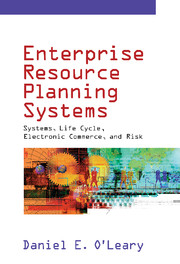4 - ERP Data Input
from PART TWO - ERP SYSTEMS
Published online by Cambridge University Press: 05 June 2012
Summary
Enterprise resource planning systems ultimately result in the reengineering of organizational processes. For example, in many legacy systems data is gathered at the loading dock, filtered through accountants, and then entered into the system. However, ERP systems are designed so that their usage can be pushed to the point of data generation, often in operations. As a result of this reengineering (see Hammer 1990), there are a number of changes in the process, including who gathers the data, how it is gathered (actually gathering more data, bypassing paper and entering data straight to a computer-based environment), gathering the data where it is generated, removing accountants and replacing them with information gatherers from operations, and changing when the data is generated to correspond to a process focus.
Each of these system changes can have a significant impact on capturing data inputs (e.g., who does data input, where is data input done, and how often is input data gathered), and this ultimately influences the quality of the data. As a result, reengineering changes to data inputs can have a major impact on the corresponding benefits and costs of an ERP implementation.
Assessing benefits is often more difficult than assessing costs – probably because benefits are not yet actualized and often are less direct. As a result, in order to understand the contribution of benefits, those associated with system changes need to be identified.
- Type
- Chapter
- Information
- Enterprise Resource Planning SystemsSystems, Life Cycle, Electronic Commerce, and Risk, pp. 49 - 60Publisher: Cambridge University PressPrint publication year: 2000



